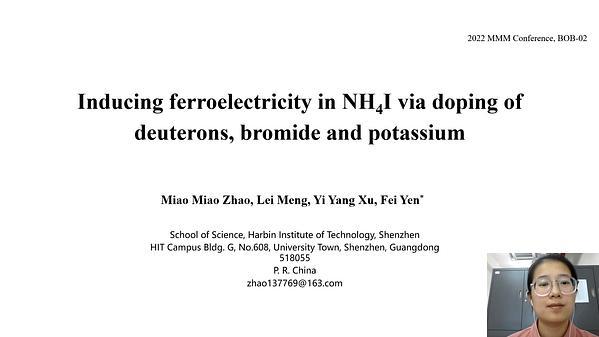Would you like to see your presentation here, made available to a global audience of researchers?
Add your own presentation or have us affordably record your next conference.
Efficient high power density electric drive motors require permanent magnets with high energy product, good thermal stability, and less critical materials. Nd2Fe14B-based sintered magnets are one of the primary candidates for these applications. However, Nd-Fe-B based magnets without heavy rare earth elements (HREE) have poor magnetic properties above 150°C, target operating temperature for most electric vehicles (EV). HREE, such as, Dy, have been added to the magnets to enhance the coercivity and improve their performance at elevated temperatures. The operating temperature of the magnets depends on the amount of Dy added. For the magnet to be operable at 200 oC, the amount of Dy required could exceed 10 wt.%. Unfortunately, Dy is a critical element. Therefore, the development of Dy-lean or free Nd-Fe-B magnets capable of high temperature operation becomes a great interest to the EV industry. It is well accepted that the coercivity of these magnets is controlled by the nucleation of reversal domains at locally low-anisotropy surfaces of the individual 2:14:1 grains.
The coercivity is sensitive to grain boundary structure, grain boundary chemistry, and grain size. Engineering microstructure techniques to develop Dy-lean or free Nd-Fe-B magnets include grain boundary diffusion by doping with a low melting point metal or rare earth oxide (REO), and grain size reduction. In this work, PrCu eutectic alloy powder is added as a sintering aid, blending with magnet feedstock powder. The PrCu alloy forms at a grain boundary phase after the magnet was sintered. The effect of PrCu on magnetic properties of Dy-free NdFeB sintered magnets was systematically studied by varying the sintering conditions. Sintering temperature can be significantly lowered with assistance of PrCu liquid phase, which is beneficial to reduce grain growth and thus enhance the coercivity. With increasing PrCu from 0, 5, 7.5 to 10 wt.%, as shown in Fig 1, the magnets obtained Hc of 14.6, 16.6, 18.6, and 18.8 kOe, and (BH)max of 37.8, 39.5, 35.0 and 28.4 MGOe, respectively. The microstructure and PrCu roles in the magnets will be analysed and discussed.
References:

Fig. 1 Demagnetization curves of the magnets with different addition of PrCu
